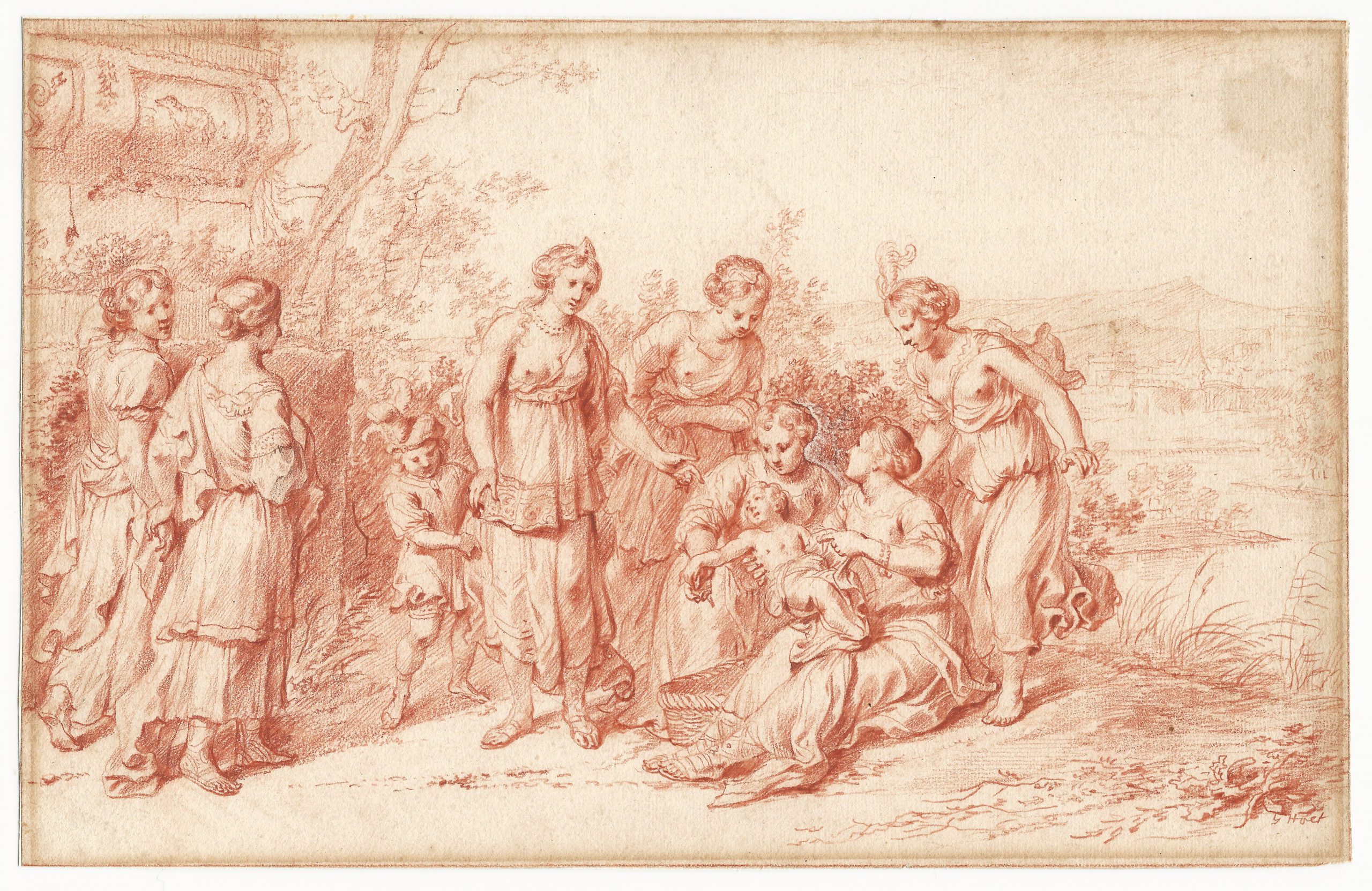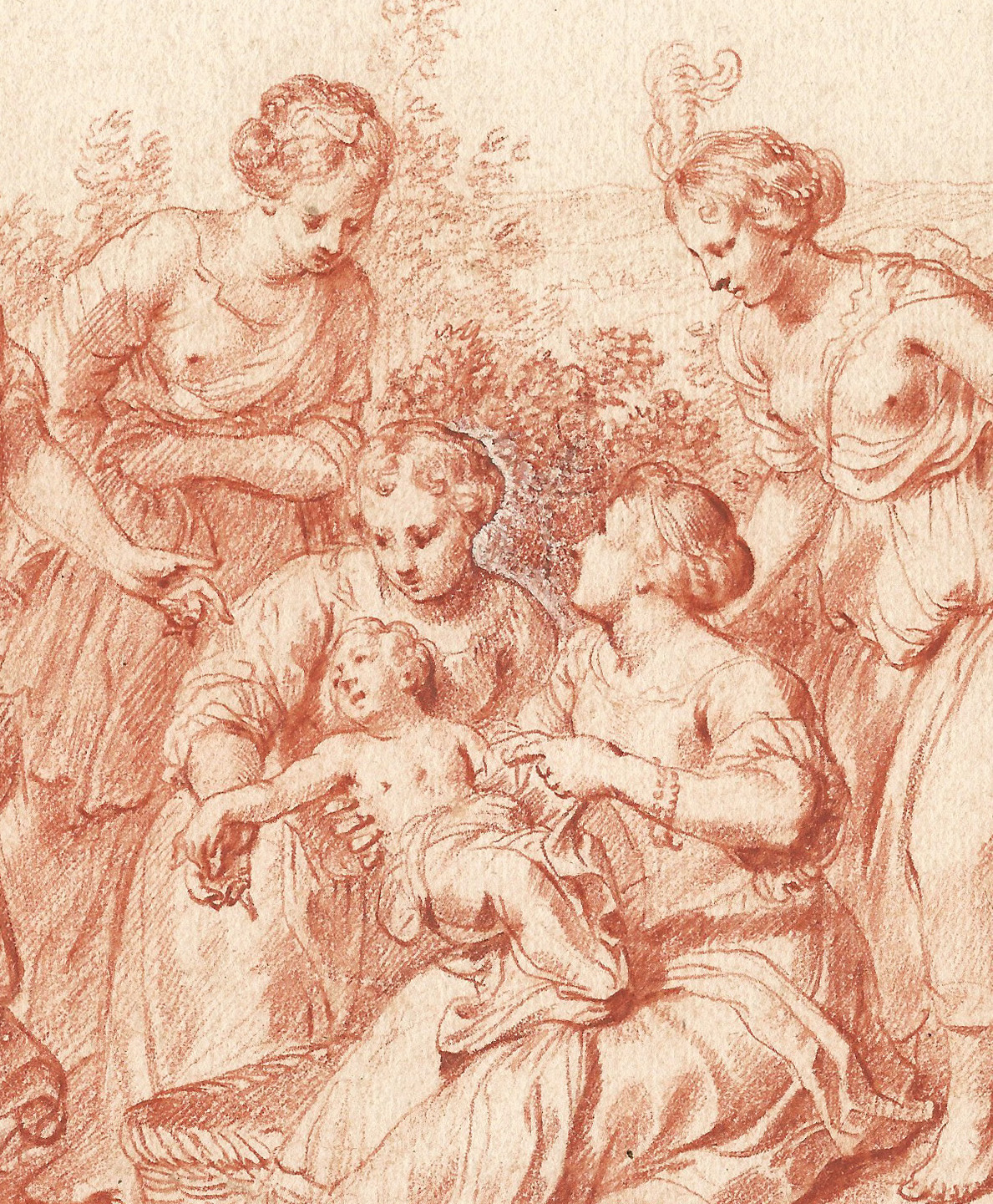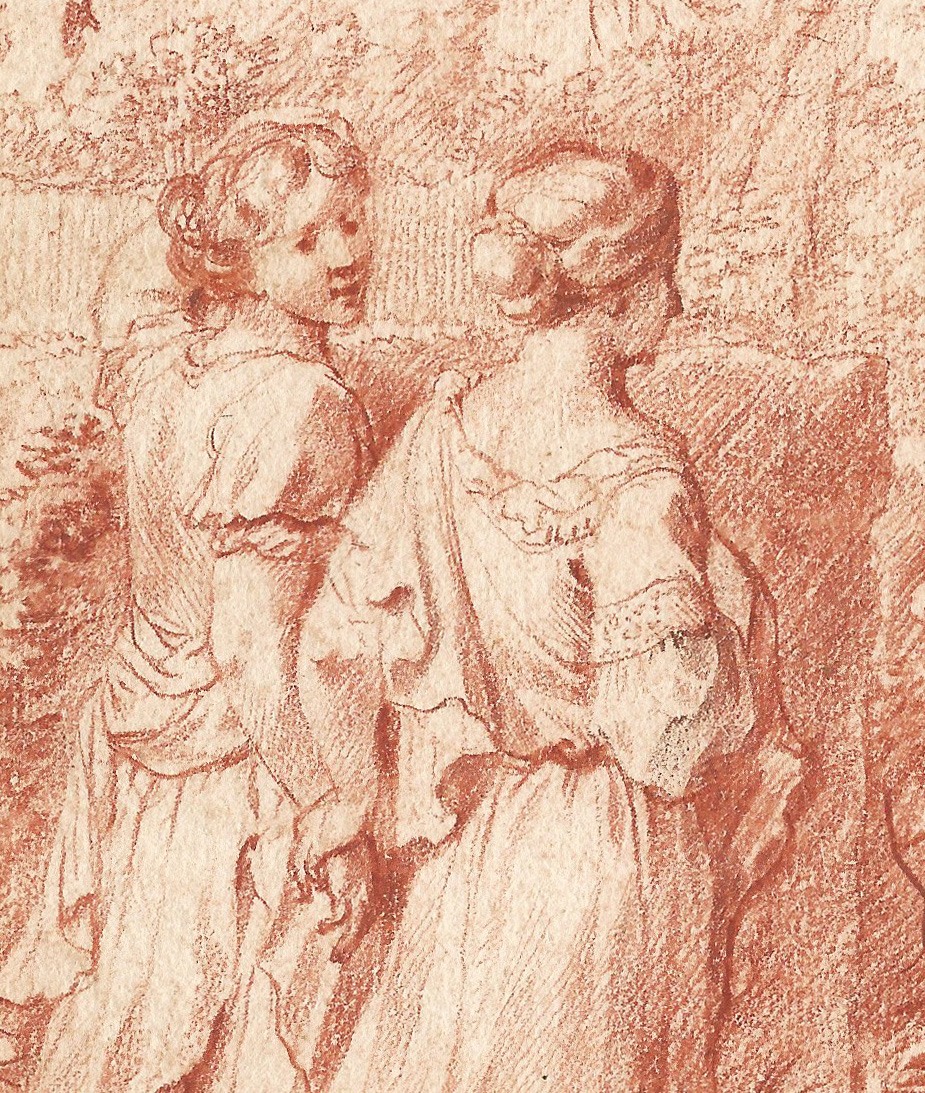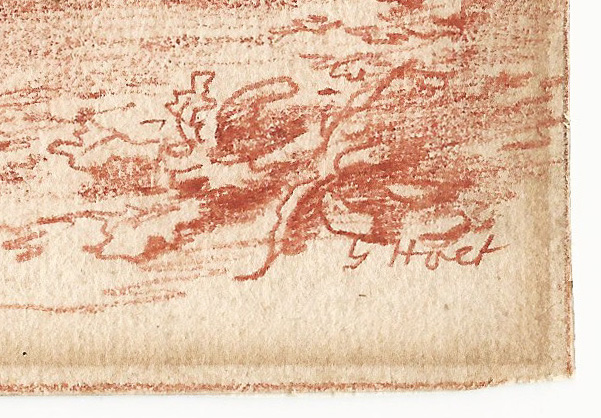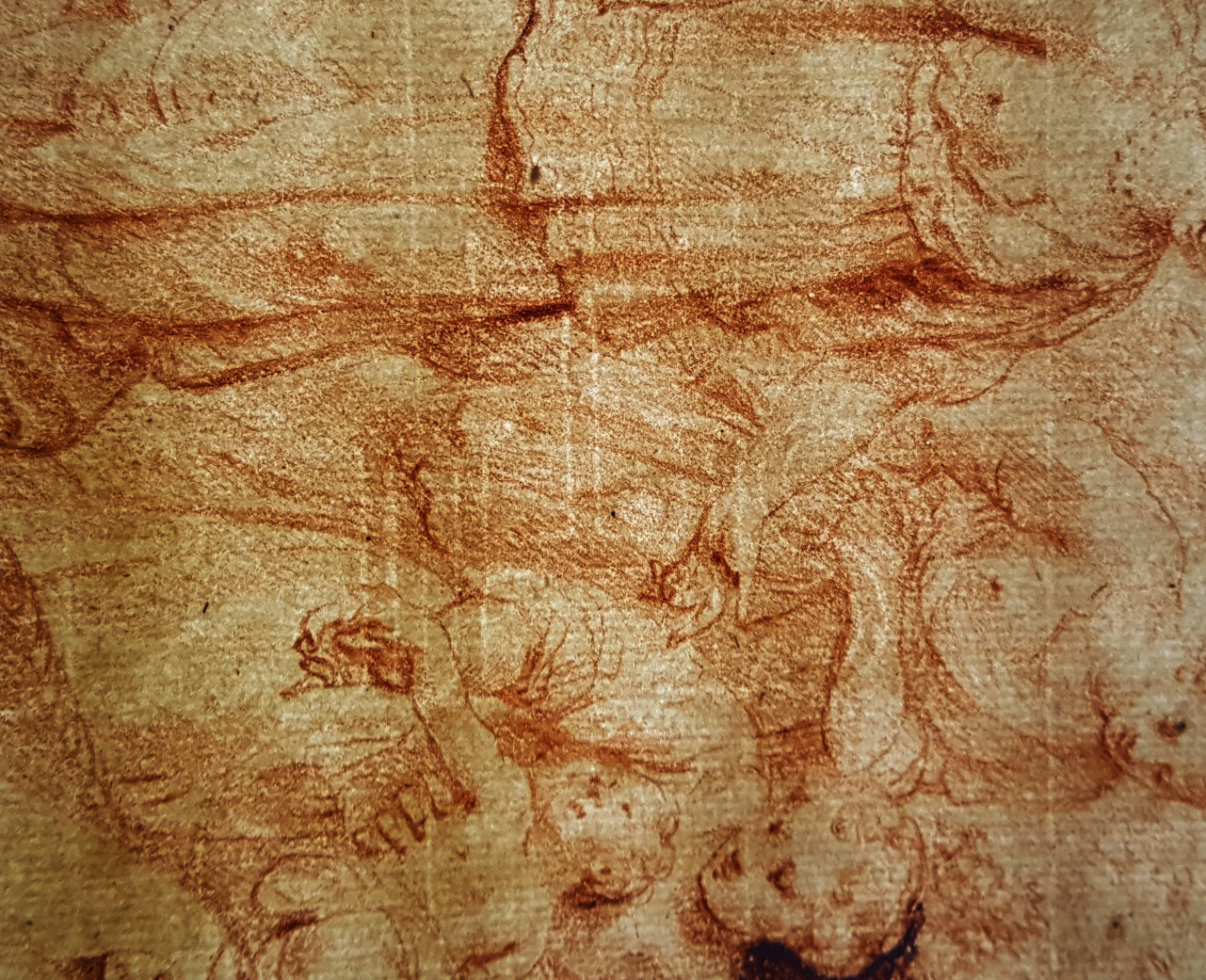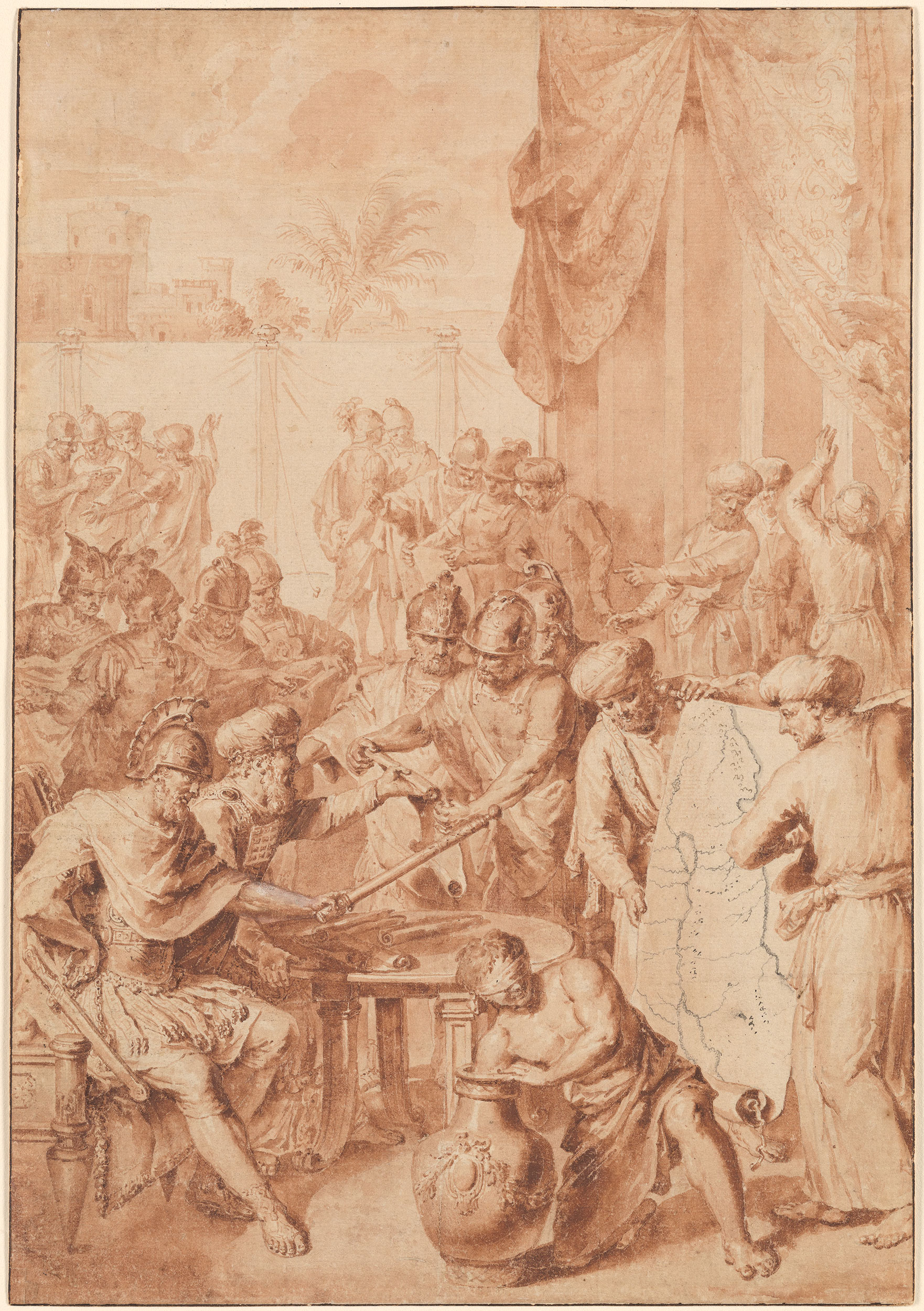GERARD HOET (Zaltbommel 1648 – 1733 The Hague)
Gerard Hoet (Zaltbommel 1669 – 1733 The Hague)
The Finding of Moses
Red chalk, some corrections in white bodycolour, red chalk framing lines, watermark IHS with cross, 207 x 324 mm (8.1 x 12.8 inch)
Signed ‘G Hoet’ (lower right)
Provenance
- With dealer Jean Willems, Brussels, c. 1980
- Private collection, Belgium, until 2018
***
Gerard Hoet initially trained with his father, the glass-painter Moses Hoet.1 According to the biographer Arnold Houbraken (1660–1719), the 7-year-old Gerard produced a painting on glass of such talent, that his father instantly decided his son should be trained as a painter.2 However, not until several years, later, when the little-known painter Warnard van Rijssen moved to Zaltbommel, could Gerard start following proper classes in oil painting. Van Rijssen had been a pupil of Cornelis van Poelenburgh, whose Italianate manner was adopted by Hoet.
In 1672 Hoet moved to The Hague, then spent time in Rees, Cleves and Paris, returning to the Netherlands via Brussels. Settling in Utrecht, he founded a drawing academy in 1697. Seventeen years later he returned to The Hague, where he spent the rest of his life. He depicted mainly religious, mythological and classical subjects set in landscapes, usually on a small scale, which show an awareness of the work of Poelenburgh. Less frequently, he painted these subjects in larger formats with multiple figures and in an elegant, classicizing style. Hoet also painted portraits and genre pieces, along with designing illustrations for bibles. His book on drawing was published in 1712.
Drawings by Hoet are relatively rare. Most known examples are executed in ink and wash, such as Joshua and Eleazar Dividing the Promised Land in the Morgan Library & Museum, New York (fig.).3 Drawings in red chalk by Hoet however are very rare. Given the high degree of finish and the presence of Hoet’s signature, this sheet is likely to have been made as an independent work of art, intended for sale to dedicated collectors. Interestingly, Hoet made a slight alteration in white bodycolour to the profile of the head and shoulder of the figure behind Moses. Hoet may have had a personal preference for this particular biblical figure, scenes from his life he depicted several times, as his own father was called Moses.4
Excellent examples of Hoet's painted work can be found in the collection of the National Trust (Stourhead) and The Dulwich Picture Gallery. A fine, large work by Gerard Hoet is also currently offered by our gallery and can be found here. In addition, a very attractive pair of paintings by Hoet is also currently offered by our gallery and can be found here.
SOLD
1. For Hoet, see: E. Buysen and Ch. Dumas, Haagse schilders in de Gouden Eeuw: het Hoogsteder lexicon van alle schilders werkzaam in Den Haag 1600-1700, The Hague 1998, pp. 315-316 and L. Schoemaker, ‘‘Zo geestig, kunstig en natuurlyk’: het portret van de familie Quarles door Gerard Hoet I (1648-1733), Oud Holland, 131, pp. 17-36.
2. Arnold Houbraken, De groote schouburgh der Nederlantsche konstschilders en schilderessen, Amsterdam 1718-21, vol. I, p. 239.
3. Brown wash, some gray wash, 305 x 213 mm, inv. no. 1990.2; engraved by Joseph Mulder for the monumental bible of François Halma, to be published in five languages in Amsterdam in 1709.
4. For instance in a drawing sold at Christie’s, Amsterdam, 8 November 2000, lot 56, and in a painting in the Staatliche Kunsthalle in Karlsruhe, inv. no. 1883, J. Lauts (ed.), Katalog alte Meister bis 1800, Karlsruhe 1966, vol. I, p. 146, no. 1883.
